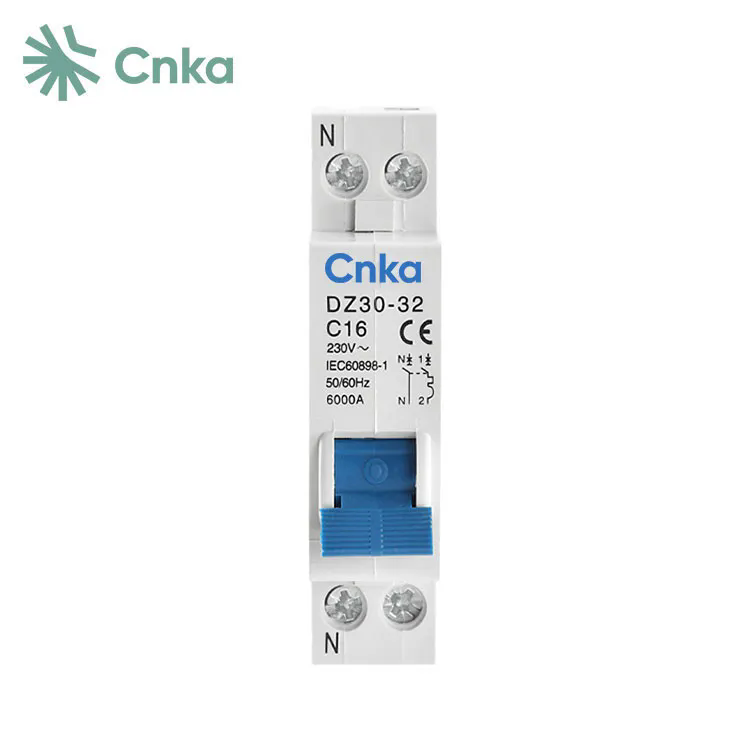AC Circuit Breakers: The Essential Safety Device for Modern Electrical Systems
2024-09-19
In the world of electrical safety, few devices are as crucial as the AC circuit breaker. Whether you're a homeowner, a business owner, or an electrician, understanding the role and functionality of AC circuit breakers is essential for maintaining a safe and reliable electrical system. In this blog, we’ll explore what AC circuit breakers are, how they work, their benefits, and why they are indispensable for protecting electrical systems from faults and overloads.
What is an AC Circuit Breaker?
An AC circuit breaker is an automatic electrical switch designed to protect an electrical circuit from damage caused by overloads or short circuits. When a fault occurs, such as an excessive current flow or a short circuit, the circuit breaker interrupts the circuit to prevent damage to wiring, appliances, and other electrical components. This interruption helps prevent potential fire hazards, electrical shocks, and other safety risks.
AC circuit breakers are used in alternating current (AC) systems, which are common in residential, commercial, and industrial electrical installations.
How Does an AC Circuit Breaker Work?
AC circuit breakers operate using a combination of thermal and magnetic mechanisms to detect and respond to electrical faults:
1. Thermal Mechanism
The thermal mechanism is designed to protect against overloads. It uses a bimetallic strip that bends when heated. During an overload condition, the increased current flow generates heat, causing the bimetallic strip to bend and eventually trip the circuit breaker. This action opens the circuit and interrupts the flow of electricity, preventing damage.
2. Magnetic Mechanism
The magnetic mechanism provides protection against short circuits. It uses an electromagnet that becomes energized when a short circuit occurs, creating a strong magnetic field. This magnetic field pulls a lever or plunger, which quickly trips the circuit breaker and disconnects the circuit. The rapid response of the magnetic mechanism ensures that the circuit is interrupted almost instantaneously during a short circuit.
3. Manual Reset
Once a circuit breaker has tripped, it needs to be manually reset to restore the circuit to its normal operating condition. This is typically done by flipping a switch or pressing a button on the circuit breaker itself. Resetting the breaker requires identifying and addressing the underlying cause of the fault before the circuit can be safely re-energized.
Benefits of AC Circuit Breakers
1. Enhanced Safety
The primary benefit of AC circuit breakers is their ability to enhance electrical safety. By automatically disconnecting the circuit during overloads or short circuits, they prevent potential fire hazards, reduce the risk of electrical shock, and protect valuable electrical equipment from damage.
2. Automatic and Reliable Protection
AC circuit breakers provide automatic protection without the need for manual intervention during fault conditions. Their reliable performance ensures that electrical circuits are safeguarded against damage, reducing the likelihood of electrical failures and downtime.
3. Ease of Maintenance
Circuit breakers are relatively easy to maintain and test. Most models have built-in test buttons and indicators to help users verify their functionality. Regular testing and maintenance ensure that the circuit breakers remain in good working condition and provide reliable protection.
4. Versatility
AC circuit breakers come in various types and sizes, making them versatile for different applications. They can be used in residential homes, commercial buildings, industrial facilities, and more. Specialized types, such as Ground Fault Circuit Interrupters (GFCIs) and Arc Fault Circuit Interrupters (AFCIs), offer additional protection for specific hazards.
5. Cost-Effective
While there are initial costs associated with installing AC circuit breakers, they are cost-effective in the long run. By preventing damage to electrical systems and reducing the risk of electrical fires, circuit breakers can save money on repairs and replacements while enhancing overall safety.
Types of AC Circuit Breakers
1. Miniature Circuit Breaker (MCB)
MCBs are designed to protect against overloads and short circuits in low-voltage applications. They are commonly used in residential and commercial electrical panels to safeguard individual circuits.
2. Residual-Current Circuit Breaker (RCCB)
RCCBs, also known as Residual-Current Devices (RCDs), provide protection against earth faults and leakage currents. They are designed to detect ground faults and disconnect the circuit to prevent electric shock.
3. Circuit Breaker with Overcurrent Protection (MCB+RCCB)
These circuit breakers combine the functions of MCBs and RCCBs, offering both overload protection and earth fault protection in a single device. They are commonly used in applications where comprehensive protection is required.
4. Arc Fault Circuit Interrupter (AFCI)
AFCIs detect and respond to electrical arcs, which are a common cause of electrical fires. They provide protection against arc faults by disconnecting the circuit when an arc is detected.
Conclusion
AC circuit breakers are an essential component of modern electrical systems, providing crucial protection against overloads, short circuits, and other electrical faults. Their ability to enhance safety, offer reliable protection, and reduce maintenance costs makes them indispensable for safeguarding homes, businesses, and industrial facilities. By understanding the role and benefits of AC circuit breakers, you can make informed decisions about your electrical system and ensure that it remains safe and efficient. Embrace the peace of mind that comes with knowing your electrical system is protected by reliable AC circuit breakers and enjoy the confidence that your electrical infrastructure is in good hands.



